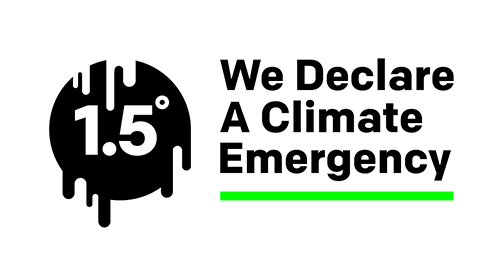Send a message 0333 344 5890 |
- Home
- Knowledge
- Learning Hub
- From Carbon Neutral to Net Zero
From Carbon Neutral to Net Zero
The shifting language and narrative of decarbonisation best practice
Many businesses, including ourselves until recently, promoted carbon neutrality as a “best practice” option for reducing their impact on climate change. This involves the purchase of carbon credits to “offset” their carbon footprint, whilst they get on with the job of reducing their own carbon footprint.
When targeted and approached in the correct manner, “carbon neutrality” can be an effective tool in combatting climate change, however, in recent years there has been a distinct shift in thinking around best practice towards the new gold standard in decarbonisation, “net zero”. This involves a primary focus on carbon reduction, rather than on offsetting.
This change stems from a mixture of changing professional opinion amongst experts, newly set government targets, and COP26’s message focussing on net zero, and has led to an associated shift in the narrative and language used.
Why the shift in language?
As noted briefly earlier, the “language” (why we now refer to best practice as “net zero”, not “carbon neutral”) has shifted in no small part due to changing expectations around carbon reduction in line with increasingly specific wording in legislation.
COP26 brought forward a decarbonisation narrative focussed on net zero. As presented by former UK Chancellor Rishi Sunak, COP26 noted the ambition for the country to become “the world’s first net zero-aligned financial centre”. By the end of COP26, 74 countries promised to reach net-zero emissions by mid-century and more than 600 of the world’s largest companies also set net zero emissions targets in the run-up to COP26. This was reinforced in 2022 when the TFCFD (Task Force on Climate-related Financial Disclosure) implemented compulsory climate-related reporting for select financial institutions and large businesses. In line with COP26, the UK Government has committed to pushing towards net zero as its climate priority through its “Net Zero: Build Back Greener” policy. As part of the policy, the UK Government notes that, “The landmark 2015 Paris Agreement agreed to hold the increase in the global average temperature to well below 2°C above pre-industrial levels, and to pursue efforts to limit it to 1.5°C.” In June 2019, the UK became one of the first states globally to enshrine in law a commitment to achieve net zero greenhouse gas emissions by 2050.
As the UK government recognises the requirement for net zero, as recommended by the Climate Change Committee (CCC), they have taken an active step away from language around carbon neutrality and towards carbon reduction.
The basis of carbon neutrality centres around purchasing and retiring of carbon credits, a system which can encourage a lack of introspective carbon reduction, instead allowing businesses to use the carbon reductions of other organisations or private entities to compensate for their own emissions. This process is often referred to as “carbon offsetting”.
Carbon credits are generated through climate positive work elsewhere in the country (or indeed, the world) using one of 2 mechanisms:
1) Reduction-based carbon credits
These involve funding projects design to help a 3rd party reduce or avoid emissions. Examples include; renewable energy projects and improvements in energy efficiency. These are generally the lowest cost methods (typically £10-20 per tonne) and therefore the most popular.
2) Removals-based carbon credits
These involve physically removing CO2 (or another greenhouse gas) from the atmosphere and locking it away in long-term storage where it cannot contribute towards global warming. Examples include; the restoration of natural carbon sinks (such as forests or peatland), carbon or methane capture and storage and biochar. This is a much more direct approach to addressing climate change, however the availability of this type of carbon credit is limited, and therefore they tend to be considerably more expensive (typically £100-200 per tonne).
Whilst the standards for carbon neutrality require a plan to reduce carbon to be in place, the focus on offsetting can all too often lead to carbon neutral businesses feeling that they have “done their bit” which can divert their attention from the critical job of reducing their carbon footprint.
The biggest problem with the principle of carbon neutrality is the lack of a scientific basis. There is no scientific study that concludes a business can claim to have no impact on global warming by offsetting all its emissions today. In the 1990/2000s, when any action that businesses took on the climate was to be applauded, this didn’t matter so much. However, in today’s world, with environmental claims coming under increasing scrutiny, having a robust evidence base for those claims is becoming ever more important.
For this reason, the UN closed its “Climate Neutral Now” certificate in 2023, saying it was “not aligned with the recommendations on net zero”. Also, the EU commission is planning to ban “Carbon Neutral” claims based on offsetting for products from 2026 calling them a “misleading marketing trick”.
For more information on making robust environmental claims see our article on avoiding greenwashing.
How is net zero different?
There is considerable confusion between the two terms “carbon neutral” and “net zero”, with many organisations using them interchangeably.
However, the standards for net zero are clear; net zero is fundamentally about making deep reductions in carbon emissions. This is because it is simply not practical to achieve net zero by offsetting alone. Precise definitions vary, but the most widely used net zero standard, the Science-Based Targets initiative, states that an organisation must have reduced its greenhouse gas emissions by at least 90% across its whole value chain before it can claim to have achieved net zero. These requirements are based on the most widespread and rigorous scientific assessment of what it will take to halt human-generated climate change, the IPCC (Intergovernmental Panel on Climate Change) cycle 6 report.
Of course, offsetting is a part of the net zero story, but for a valid claim an organisation can only offset up to 10% of its emissions and it must do so using the more direct removals-based carbon credits.
This focus on deep reductions makes the pursuit of net zero, for most organisations, very much a long-term project.
The potential benefits of net zero
The UK Government’s Net Zero strategy notes, “net zero will also bring significant benefits and opportunities, such as economic growth and jobs in new green sectors, reducing air pollution with benefits for health, and enhancing biodiversity.” The benefits of growing with net zero commitments in mind present a slew of potential opportunities for businesses of all sizes to grow into the green economy.
Net zero businesses will have a greater opportunity to win work across government contracts, publicly owned organisations and large business contracts, who have all typically made their own net zero commitments. To achieve net zero, these organisations need their supply chain to do the same and are putting increasing commercial pressure on their suppliers to commit to net zero, requiring them to report and reduce their emissions annually.
In the consumer (B2C) economy, businesses will have more selling power to their customers, and to new customers. A national survey commissioned by sustainability charity WRAP found that 66% of UK consumers agree that businesses should do more to help customers reduce their own impact on climate change.
Actionable first steps on your net zero journey
The obvious next question may be: “Where/how do I actually start on my net zero journey?”. There are several key steps you can take:
1) Calculation of your business’s baseline carbon footprint.
While it does require some upfront effort to make complete a baseline calculation (especially in collecting data), it is critical to complete this step before moving on with any carbon reduction or net zero plan. There are several free online tools to help you calculate a basic (often partial) version of your business’s baseline carbon footprint. To get a more holistic, accurate picture of your business’s carbon footprint based on verified and fuller datasets, options are available for carbon calculation through bespoke carbon coaching businesses, such as Go Climate Positive.
2) Nominate in-house carbon champion(s).
Identify suitable in-house team members to take on responsibilities as your business’s carbon champions. These team members should have a keen interest in environmentalism from different angles, due to the multifaceted areas the role can shape into. Some businesses may need to use carbon champions for data collection/calculation, some for in-house enforcement of carbon-reducing commuting or recycling policies, etc.
3) Net Zero transition plan.
Following the process of baselining your business’s carbon footprint, you should then take steps to develop a Net Zero transition plan, essentially a roadmap for the short, medium, and long-term changes your business needs to make to reduce your carbon footprint, with a tangible aim towards net zero in the long run. This plan should have a particular focus on engaging your suppliers and other stakeholders in carbon reduction since they typically account for 75-80% (CDP, 2019) of a businesses’ carbon footprint.
4) Contribute towards the wider Net Zero effort
Increasingly organisations are viewing their purchase of carbon credits as a contribution towards the wider effort to decarbonise the planet, rather than as an “offset”. Done well, this approach can complement the organisation’s own journey towards Net Zero. This will be the subject of a future article in our Learning Hub.
5) Utilise a carbon coaching service.
Go Climate Positive’s bespoke carbon coaching service helps businesses to ensure the steps taken along their carbon reduction/net zero journey are the correct ones. Through a hands-on approach, carbon coaches guide your journey to net zero by providing actionable steps to help you implement the correct policies and processes, and certification to demonstrate your commitments, and new credentials.
What should we do if we have been Carbon Neutral?
We recognise that some organisations may have been Carbon Neutral for several years and that making a transition to Net Zero may be a daunting prospect; we have been on the same journey ourselves. Despite the challenges we recommend starting to plan this transition as soon as possible so that you can have fully completed it before the EU ban comes into force, which we expect to create something of a media backlash against the term.
We recommend taking the following steps:
1) Make a plan:
Lay out a timetable for when you are going to make the transition from Carbon Neutrality to Net Zero. Give yourself plenty of time to get buy-in from all the key stakeholders in your business and to get your Net Zero transition plan in place.
2) Get your message straight:
Prepare your internal and external messages to clearly explain why you are making this change. Honesty and transparency are key here, it’s ok to acknowledge that best practice has changed, and you have been prepared to change with it. You can use the content of this article to help.
3) Get internal buy-in:
We strongly recommend getting buy-in from your internal stakeholders, especially your leadership team, before you start. It may feel uncomfortable to make the change, so knowing that you have support from the top is critical.
4) Make your Net Zero transition plan:
Writing your net zero transition plan before you go public about transitioning away from carbon neutrality will strengthen your message and demonstrate that this this is a thoughtful and well-planned decision. You will be able to confidently talk about your plans to achieve net zero from a position of knowledge. This will help ensure that the overall message is a positive one.
About Go Climate Positive
Go Climate Positive are expert carbon coaches, able to work with you to take the confusion out of scope 3 and net zero. Our “Road to Net Zero” programme is designed to help you implement a net zero transition plan, step-by-step, at the right pace for your business.
Get in touch today to find out more about how we can help.
Written by Eoin McQuone

Eoin (pronounced like “Ian”) is the Chief Carbon Coach and founder of Go Climate Positive, and a Practitioner member of IEMA (the Institute of Environmental Management).
Eoin says, “Sustainability is no longer a ‘nice thing to do’, it is business critical. My goal is to make it accessible and affordable for every business, however big or small, no matter their market sector.”




